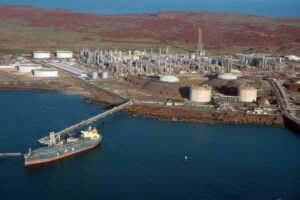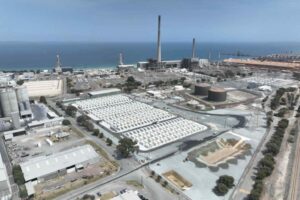Australia’s greenhouse gas emissions edged higher in the second quarter of 2021, with the easing of travel restrictions and an agriculture sector emerging from drought conditions contributing to a higher national emissions footprint.
According to updated quarterly emissions figures published by the Department of Industry, Science, Energy and Resources, Australia’s emissions were 4.9 per cent higher in the second quarter of 2021 compared to the same period 12-months prior.
Over the full 12-month period, emissions have decreased by 2.1 per cent, driven by the continued growth in the supply of electricity from zero emissions wind and solar, which has been pushing fossil fuel generators out of the electricity market, as well as decreased transport fuel consumption.
The period also includes the second half of 2020, which featured periods of extensive Covid-19 lockdowns, including prolonged movement restrictions in Victoria.
While the fall in national emissions over the 12-month period has been welcomed, the Climate Council said the pace of the reductions had been "sluggish" and was falling short of what was needed for Australia to deliver on international climate goals.
"Today's quarterly emissions data reveals that our sluggish and inadequate national response continues. We know from painful, recent experience throughout the COVID-19 pandemic, that delaying a response or being slow to act carries serious consequences," Climate Council researcher Tim Baxter said.
"We can't afford to go slow on this. The time for leaning on the achievements of others is long since past. We need a federal government willing to step up on emissions reductions and take charge with real policy, not wish lists."
The easing of Covid-19 restrictions, seeing transport emissions jump 30 per cent higher compared to the second quarter of 2020 when much of Australia was plunged into lockdowns.
The easing of drought conditions has also contributed to higher emissions in the agricultural sector, up 5.1 per cent in the quarter, as cattle herd numbers begin their recovery as available food begins to lift.
Waste emissions also jumped higher, up 7.1 per cent for the quarter, which the federal government attributed to decreased methane gas capture at waste processing facilities.
The last decade has seen the market share of wind and solar in the National Electricity Market surge, while the contributions from coal and gas generators have fallen considerably, also squeezed by falling demand has more households and businesses install rooftop solar and adopt energy efficiency measures.
Greenpeace Australia Pacific said the updated data, which showed ongoing emissions reductions being achieved in the electricity sector, highlighted the extent to which coal was being squeezed out of the market by the growth of low-cost supplies of wind and solar.
"This drop in emissions is happening in spite of Federal Government attempts to stall or block climate progress, as businesses, states and territories get on with the job of transitioning our energy system to renewables," Greenpeace Australia Pacific campaigner Glenn Walker said.
"Coal-burning power companies like AGL are being pushed out of our electricity system by cheaper, cleaner renewables, and we're seeing our emissions drop as a result."
"Wind, solar and batteries are already powering the country, and the Federal Government must prioritise investment in these proven renewable powerhouses, rather than waste taxpayers' money on fantasy technology like carbon capture or dirty gas," Walker added.
Much of Australia's emissions reductions are being driven by private sector investments in clean energy projects and voluntary action towards reducing emissions, as pressure builds from customers, investors, and industry peers to adopt and deliver on targets consistent with international efforts to keep global warming within safer levels.
Federal energy and emissions reduction minister Angus Taylor announced on Tuesday that 11 large Australian companies would begin voluntarily reporting their progress towards corporate emissions reduction targets, including their purchases of emissions reduction offsets.
Coles and Woodside were amongst the early group of companies signing up to the Corporate Emissions Reduction Transparency project, being administered by the Clean Energy Regulator.
"The CERT report will add a new level of transparency and accountability for Australia's largest companies' performance against their voluntary emissions reduction targets," Taylor said.
"It will provide a one-stop shop for the public to access net emissions, renewable electricity and offset data for Australia's largest companies and understand their plans to decarbonise."
"Eligible companies are urged to take part in the pilot and show they will be accountable for the commitments they've made," Taylor added.
Lies, myths and greenwashing. Good independent journalism is time-consuming and costly. But small independent media sites like RenewEconomy have been excluded from the tens of millions of dollars being handed out to big media companies from the social media giants. To enable us to continue to hold government and business to account, to cut through the lies and the misinformation about the renewable transition, and to help expand our work, you can make a voluntary donation here to help ensure we can continue to offer the service free of charge and to as wide an audience as possible. Thank you for your support.







